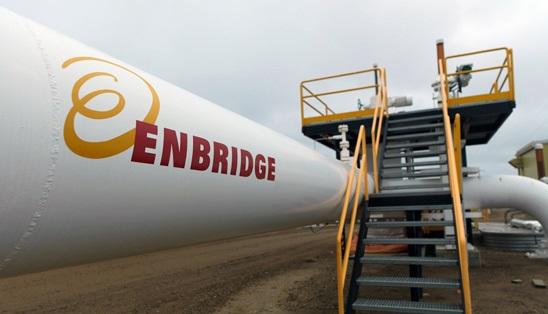Enbridge Inc., one of North America’s largest energy infrastructure companies, is reporting robust demand for increased oil pipeline capacity from Canada to the U.S. Gulf Coast. The surge in interest highlights growing cross-border energy trade and underscores the strategic importance of reliable pipeline networks in meeting rising crude oil transportation needs. As markets respond to evolving production and consumption patterns, Enbridge’s capacity expansion plans could play a pivotal role in strengthening supply chains and supporting economic ties between the two countries.
Enbridge Reports Rising Need for Expanded Oil Pipeline Capacity Between Canada and US Gulf Coast
Enbridge has highlighted a significant uptick in market demand for additional oil pipeline infrastructure connecting Western Canada with the U.S. Gulf Coast. Industry analysts emphasize that this surge is driven by increasing export opportunities and the need to alleviate current bottlenecks. The company is actively assessing project expansions and capacity enhancements to support the growing flow of crude oil, aiming to ensure seamless transportation amid tightening global energy supplies.
Key factors contributing to this trend include:
- Increased production from Canadian oil sands and shale formations
- Rising U.S. Gulf Coast refining capacity demanding diverse crude sources
- Strategic shifts in global energy markets favoring North American supply chains
Below is a brief overview of projected capacity expansions and timelines:
| Project | Current Capacity (barrels/day) | Proposed Capacity (barrels/day) | Estimated Completion |
|---|---|---|---|
| Line 3 Replacement & Expansion | 760,000 | 870,000 | Q4 2024 |
| Gulf Coast Connector | 450,000 | 600,000 | Mid 2025 |
Analyzing Market Drivers Behind Increased Demand for Cross-Border Energy Infrastructure
Several key factors are driving the surge in demand for cross-border energy infrastructure between Canada and the US Gulf Coast. First, rising oil production in Canada’s shale formations has outpaced existing pipeline capacity, creating bottlenecks that necessitate expanded transportation routes. Additionally, the US Gulf Coast remains a strategic refining hub, offering proximity to export terminals and international markets, thereby increasing the attractiveness of enhanced pipeline connectivity. Economic incentives like favorable regulatory environments and cross-border trade agreements further stimulate investment in these critical energy corridors.
Market participants are also responding to shifting energy dynamics and geopolitical considerations. The growing need to diversify energy supply routes amid global uncertainty has prompted companies to prioritize more secure and reliable pipeline options. Environmental commitments are influencing infrastructure designs to incorporate sustainability measures, but demand continues to prioritize volume and efficiency. Below is a simplified overview of principal drivers impacting the infrastructure demand:
| Driver | Impact |
|---|---|
| Canadian Oil Production Growth | High – Limits existing capacity |
| US Gulf Coast Refining Demand | High – Export gateway |
| Regulatory Environment | Moderate – Encourages development |
| Geopolitical Stability | Moderate – Risk mitigation |
| Environmental Standards | Low to Moderate – Increasing |
Strategic Recommendations for Enhancing Pipeline Efficiency and Addressing Regulatory Challenges
To optimize operational throughput and navigate increasingly complex regulatory landscapes, industry leaders must prioritize investments in advanced monitoring technologies and predictive maintenance. Implementing real-time data analytics can significantly reduce downtime by anticipating equipment failures before they escalate. Moreover, fostering transparent communication channels between pipeline operators and regulatory agencies will be crucial. This approach will not only streamline compliance processes but also build public trust by demonstrating a commitment to safety and environmental stewardship.
Collaboration across stakeholders is essential to overcoming bottlenecks and regulatory hurdles. Key strategic actions include:
- Standardizing regulatory reporting to simplify audits and inspections
- Enhancing cross-border coordination for seamless transit of crude oil
- Investing in sustainable pipeline materials to mitigate environmental risks
- Engaging local communities to address concerns and foster cooperative relationships
| Strategy | Expected Impact |
|---|---|
| Predictive Maintenance Systems | Reduce unplanned downtime by 30% |
| Regulatory Reporting Standardization | Cut compliance time by 25% |
| Cross-border Pipeline Coordination | Accelerate throughput by 15% |
| Community Engagement Programs | Boost social license and reduce protests |
To Wrap It Up
As Enbridge continues to navigate the shifting landscape of North American energy markets, its indication of robust demand for expanded oil pipeline capacity underscores the ongoing strategic importance of Canada-US energy trade. While the company positions itself to meet growing transportation needs to the US Gulf Coast, stakeholders will be closely watching regulatory developments, environmental considerations, and market dynamics that could influence the pace and scale of future infrastructure projects. This evolving scenario remains critical for industry players and policymakers alike as they balance economic growth with sustainability concerns.




